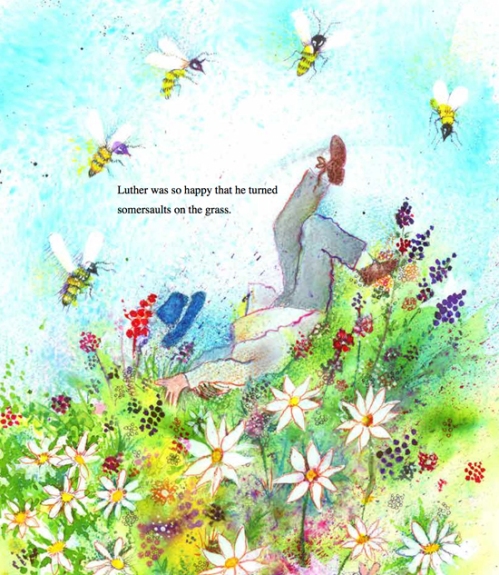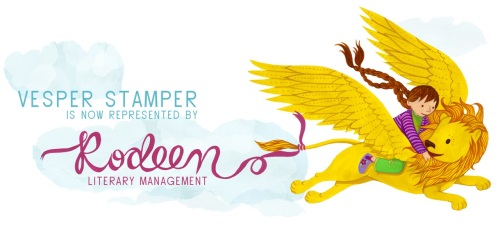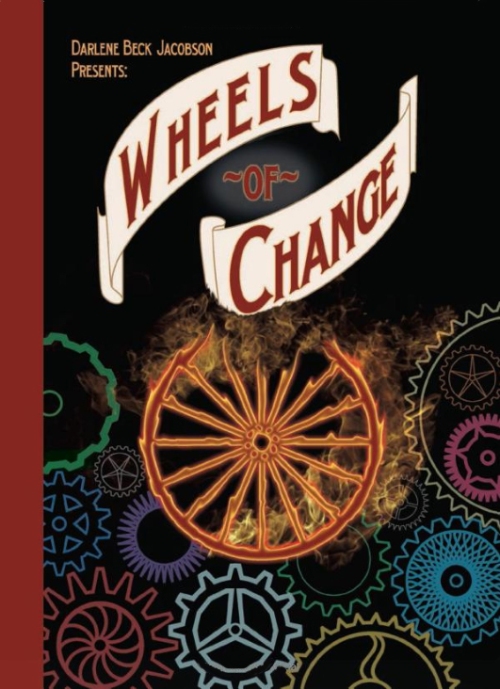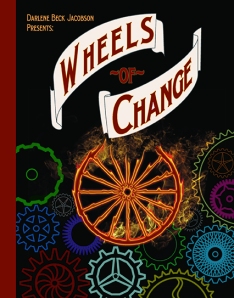new posts in all blogs
Viewing: Blog Posts Tagged with: Darlene Beck-Jacobson, Most Recent at Top [Help]
Results 1 - 8 of 8
How to use this Page
You are viewing the most recent posts tagged with the words: Darlene Beck-Jacobson in the JacketFlap blog reader. What is a tag? Think of a tag as a keyword or category label. Tags can both help you find posts on JacketFlap.com as well as provide an easy way for you to "remember" and classify posts for later recall. Try adding a tag yourself by clicking "Add a tag" below a post's header. Scroll down through the list of Recent Posts in the left column and click on a post title that sounds interesting. You can view all posts from a specific blog by clicking the Blog name in the right column, or you can click a 'More Posts from this Blog' link in any individual post.
 Darlene’s Debut Historical Novel WHEELS OF CHANGE launches on September 22nd. I am only too glad to be part of Darlene’s Blog Tour.
Darlene’s Debut Historical Novel WHEELS OF CHANGE launches on September 22nd. I am only too glad to be part of Darlene’s Blog Tour.
Darlene gave me an advanced copy and I loved the book. It is a middle grade book, so YA readers don’t expect to find steamy and edgy. What you do find is a well-written book that everyone will enjoy. I like that she based it on some real life events that happened in her Grandmother’s life.
We are very lucky. Darlene has agreed to give one lucky visitor a copy of her book. All you have to do is leave a comment below to have a chance to win. Want to up your chance? Then twitter about it, post on facebook, or another social media site, and let me know. I will add your name on a piece of paper for each thing you do. On September 18th, I will announce the winner and have Darlene mail out your copy. Please note: Darlene will pay for US shipping and any other reasonable shipping, but she may have to refuse shipping to every country around the world.
Three Fun Facts About Darlene:
- Even though I can’t swim, I snorkeled in the Great Barrier Reef in Australia thanks to a life jacket and swim ring. It was magnificent…and scary. Without the swim ring there was NOTHING to hold onto.
- I like trying new food and have enjoyed the following:
- Frog legs (tastes like chicken wings) and Escargo (garlicky and melts in the mouth) in Paris.
- Ostrich (like filet mignon) in Lambertville, NJ
- Crocodile (chewy and fishy, like clams) and Kangaroo (like ground beef only better) Both in Australia
- Buffalo (leaner and more tender than beef) in Western Canada
- Passion Fruit (sweet and delicious) in Hawaii
- Conch (heavenly) Florida keys
- Panga Fish (BEST fish I’ve ever eaten, bar none) in Vollendam, Netherlands
Food you couldn’t pay me to eat again: Poi (wallpaper paste tastes better) and Vegemite (way too salty)
- I love learning new things and have taken classes in:
- Flint napping
- Navaho rug weaving
- Origami
- Crazy quilting
- Pisanki (Polish egg decorating)
Three Fun Facts About Darlene’s Grandmother – the real Emily Soper:
- She was a debutante in Washington DC Society and travelled in the same social circles as Alice Roosevelt.
- She lost her standing in society when she married my grandfather for love instead marrying for money and status.
- She was 4 feet 11 inches tall.
Filed under:
Author,
Book Tour Tagged:
Blog Tour,
book give-a-way,
Darlene Beck-Jacobson,
Wheels of Change 


By: Kathy Temean,
on 8/27/2014
Blog:
Writing and Illustrating
(
Login to Add to MyJacketFlap)
JacketFlap tags:
inspiration,
authors and illustrators,
Publishing Industry,
Kudos,
Editor & Agent Info,
Publishers and Agencies,
Amalia Hoffman,
Darlene Beck-Jacobson,
Vesper Stamper,
Carly Watters,
Add a tag

Congratulations to everyone in this post. I am sure all of you are doing somersaults like Luther in this new illustration sent in my Amalia Hoffman. http://www.amaliahoffman.com

Kirkus published a great review for Darlene Beck-Jacobson ‘s new book WHEELS OF CHANGE which is coming out in September. I read an advanced copy and wrote a review that is up on Goodreads.
Here are the links:
http://www.kirkusreviews.com/book-reviews/darlene-beck-jacobson/wheels-of-change-jacobson/
https://www.goodreads.com/review/show/1023025140
Vesper Stamper proves that winning a contest can get you noticed and sometimes that is all you need to make things happen. Vesper won the NJSCBWI Illustrator Showcase at the end of June and six weeks later, that win landed her representation with Lori Kilkelly at Rodeen agency.
Yvonne Ventresca was featured in the August NJSCBWI Author Spotlight. Here is the link: http://newjersey.scbwi.org/author-spotlight/author-spotlight-yvonne-ventresca/
 At P.S. Literary Agency, Carly Watters has been promoted to vp, senior literary agent.
At P.S. Literary Agency, Carly Watters has been promoted to vp, senior literary agent.
Julia Maguire has joined Knopf Children’s as editor. Previously she was an associate editor at Simon & Schuster Children’s.
Orion Children’s Books editorial director Amber Caraveo is leaving the publisher to become an agent, creating Skylark Literary along with Joanna Moult, officially launching in November. The agency will focus on YA and children’s authors.
The Simon Pulse imprint has promoted Liesa Abrams to vp, editorial director of Simon Pulse and associate editorial director of Aladdin. Plus, Michael Strother is being promoted to associate editor of Simon Pulse.
Talk tomorrow,
Kathy
Filed under:
authors and illustrators,
Editor & Agent Info,
inspiration,
Kudos,
Publishers and Agencies,
Publishing Industry Tagged:
Amalia Hoffman,
Carly Watters,
Darlene Beck-Jacobson,
Vesper Stamper 


By: Kathy Temean,
on 5/31/2014
Blog:
Writing and Illustrating
(
Login to Add to MyJacketFlap)
JacketFlap tags:
inspiration,
Process,
How to,
Study Guide,
demystify,
Wheels of Change,
Darlene Beck-Jacobson,
Study Guide Example,
marketing,
Writing Tips,
Add a tag

WHEELS OF CHANGE STUDY GUIDE
- Change is the overriding theme of this novel. Discuss good vs. bad change and how the characters accepted or rejected change. CCSS RL 4.9
- How did Emily’s ideas about change evolve throughout the story? CCSS RL 3.3
- What does the horseshoe symbolize? Do you think it really had power? Explain. CCSS RL 5.4
- Do you think Beatrice’s personality and behavior are her own or as result of trying to please her mother? CCSS RL 3.3
- What characteristics made Charlie a good friend for Emily? Vice versa. CCSS RL 3.3
- What do you think of Emily’s reaction to Mrs. Peabody’s comments at the tea? Was Emily justified in dumping tea in Mrs. Peabody’s lap? Explain why or why not. What would you have done? CCSS RL 4.3
- 1908-09 was a time in history when segregation was common. Do you think Mr. Soper was courageous in employing an African-American? Explain. CCSS RL 3.3
- Was life easier or harder in 1909? What did you like about the time period?
- The roles of males and females were more sharply divided in the early 20th Century. Do you think Emily’s resistance to learning proper lady-like behavior was typical for girls her age? Why or why not? CCSS RL 4.3
- How did Emily’s relationship with Mama change? CCSS RL 5.2
- The story takes place when there were fewer luxuries in everyday life – especially regarding entertainment. What would you do if you had no radio, television, telephone, electricity or car, like most of the people in the story? CCSS RL 4.9
- Learning skills and being self-sufficient was important during this time in history. Why? Do you think these values are still important today? Explain.
- Emily and Charlie were expected to help the family by doing daily chores. If they weren’t completed, the household and family suffered. Does your family depend on you to do certain jobs? What would happen if you didn’t do them? CCSS RL 4.9
- What did Emily expect President Roosevelt to do for Papa? CCSS RL 4.3
- What did you think of Emily’s suggestions for changing Papa’s business? What might you have done to help? CCSS RL 4.9
- Do you think it was foolish or brave of Emily to stay in the barn during the fire? What would you have done? CCSS RL 3.3
- There were limited opportunities for women at the turn of the 20th Century. Single women who were not from wealthy families could teach, work long hours in a factory under awful conditions, or work as maids, governesses, or servants to wealthy families. Once married, they were expected to stay home and care for their husband and children. Do the opportunities enjoyed by women today make their lives easier or more difficult? Explain. CCSS RL 4.9
- When Mama first meets Mrs. Jackson, they seem ill as ease with one another. Why? CCSS RL 5.2
- Do you think it was unusual for Emily’s best friend to be a boy? Why or why not?
- If the story took place today, do you think it would be easy for a girl to become a blacksmith? Explain.
Hope this gives you some ideas of how proceed when you publish your book.
Talk tomorrow,
Kathy
Filed under:
demystify,
How to,
inspiration,
marketing,
Process,
Writing Tips Tagged:
Darlene Beck-Jacobson,
Study Guide,
Study Guide Example,
Wheels of Change 


By: Kathy Temean,
on 5/27/2014
Blog:
Writing and Illustrating
(
Login to Add to MyJacketFlap)
JacketFlap tags:
Marketing a book,
Wheels of Change,
Darlene Beck-Jacobson,
Curriculum Guide Example,
Secon Industrial Revolution,
Women gaining independence,
reference,
inspiration,
Process,
Add a tag
WHEELS OF CHANGE CURRICULUM GUIDE
Introduce students to the Industrial Revolution at the turn of the Twentieth Century, using the book as a basis for discussions. This topic is part of the national learning standards and curriculum for U.S. History.
Topics for discussion:
- Introduce causes of the Industrial Revolution and how it changed the workplace and production of goods in America.
- Discuss handmade vs. factory made goods.
- Discuss good change vs. bad change and how it affects individuals and society.
- Discuss women’s emerging independence, their role in the workplace and at home, and how this affects the family.
Objectives:
- To understand the causes and effects of the Second Industrial Revolution (1890’s through WWI)
- To understand how progress has negative as well as positive consequences for individuals and society.
- To understand how even when some members of society benefit from changes, others may not.
- To witness a personal perspective to a period in our nation’s history.
Key Words/Concepts:
- Mass Production
- Assembly lines
- Women’s Suffrage
- Segregation/Prejudice
- Mechanization
Background:
The Industrial Revolution began in the late 1700’s through the 1840’s when goods formerly produced by hand began to be made with machines. Almost every aspect of daily life was influenced in some way. The second wave of industrialization occurred at the turn of the Twentieth Century and lasted until World War I. This revolution revolved around steel, railroad expansion, electricity, chemicals, and communication.
Mass production of steel replaced hand wrought iron. Blacksmiths – like Henry Johnson in WHEELS OF CHANGE – would no longer be needed to produce the rails, machine components and tools used to manufacture goods and move them from one place to another. Railroads replaced steamboats to transport goods over longer lasting steel rails. Electricity allowed factories to increase production of clothing and household goods. It also made it possible for Henry Ford to redesign the factory using tools and specialized machines positioned in a unique sequence to eliminate unnecessary human movement. The assembly line was born. More goods made in less time at a cheaper cost.
It took Mr. Soper weeks to make one of his carriages. It also took Henry days to hammer out all the iron needed to support the carriage body. The new factory system eliminated this labor-intensive process.
Part One: Making the topic relevant:
Begin a discussion on all the modern conveniences we all enjoy thanks to factory made products. When things get lost or broken we can easily and cheaply replace them.
Part Two: Read WHEELS OF CHANGE with students and start a discussion using the following topics:
- Why was Emily worried about automobiles coming to town? Was her worry real or imagined?
- How did having electricity and a telephone change life for Emily and her family?
- Emily’s mama had few modern appliances or household gadgets. How would having these things change her life?
- Why were some people upset when papa employed an African American blacksmith? How did prejudice impact some of the decisions actions taken in the story?
- Women could not vote and had few rights in 1908. Why do you think so many people were opposed to allowing women the right to vote?
- Why was the telegraph and mail service so important in the early 1900’s?
Concluding Activity: Have students write about what their lives would be like without electricity, telephones, or motor cars. Would some aspects of life be better without those things?
Or, have them write about prejudice and being judged by the color of your skin. Should groups be singled out based on ethnic origin, religion, or political beliefs? Where in the world are these things still taking place today?
Stop back on Sunday to view Darlene’s Study Guide.
Talk tomorrow,
Kathy
Further Study:
http://en.wikipedia.org/wiki/Second_Industrial_Revolution
www.ushistoryscene.com/uncategorized/secondindustrialrevolution/
Filed under:
inspiration,
Marketing a book,
Process,
reference Tagged:
Curriculum Guide Example,
Darlene Beck-Jacobson,
Secon Industrial Revolution,
Wheels of Change,
Women gaining independence 


By: Kathy Temean,
on 5/27/2014
Blog:
Writing and Illustrating
(
Login to Add to MyJacketFlap)
JacketFlap tags:
Wheels of Change,
Darlene Beck-Jacobson,
Curriculum Guide Example,
Secon Industrial Revolution,
Women gaining independence,
reference,
inspiration,
Process,
Marketing a book,
Add a tag
WHEELS OF CHANGE CURRICULUM GUIDE
Introduce students to the Industrial Revolution at the turn of the Twentieth Century, using the book as a basis for discussions. This topic is part of the national learning standards and curriculum for U.S. History.
Topics for discussion:
- Introduce causes of the Industrial Revolution and how it changed the workplace and production of goods in America.
- Discuss handmade vs. factory made goods.
- Discuss good change vs. bad change and how it affects individuals and society.
- Discuss women’s emerging independence, their role in the workplace and at home, and how this affects the family.
Objectives:
- To understand the causes and effects of the Second Industrial Revolution (1890’s through WWI)
- To understand how progress has negative as well as positive consequences for individuals and society.
- To understand how even when some members of society benefit from changes, others may not.
- To witness a personal perspective to a period in our nation’s history.
Key Words/Concepts:
- Mass Production
- Assembly lines
- Women’s Suffrage
- Segregation/Prejudice
- Mechanization
Background:
The Industrial Revolution began in the late 1700’s through the 1840’s when goods formerly produced by hand began to be made with machines. Almost every aspect of daily life was influenced in some way. The second wave of industrialization occurred at the turn of the Twentieth Century and lasted until World War I. This revolution revolved around steel, railroad expansion, electricity, chemicals, and communication.
Mass production of steel replaced hand wrought iron. Blacksmiths – like Henry Johnson in WHEELS OF CHANGE – would no longer be needed to produce the rails, machine components and tools used to manufacture goods and move them from one place to another. Railroads replaced steamboats to transport goods over longer lasting steel rails. Electricity allowed factories to increase production of clothing and household goods. It also made it possible for Henry Ford to redesign the factory using tools and specialized machines positioned in a unique sequence to eliminate unnecessary human movement. The assembly line was born. More goods made in less time at a cheaper cost.
It took Mr. Soper weeks to make one of his carriages. It also took Henry days to hammer out all the iron needed to support the carriage body. The new factory system eliminated this labor-intensive process.
Part One: Making the topic relevant:
Begin a discussion on all the modern conveniences we all enjoy thanks to factory made products. When things get lost or broken we can easily and cheaply replace them.
Part Two: Read WHEELS OF CHANGE with students and start a discussion using the following topics:
- Why was Emily worried about automobiles coming to town? Was her worry real or imagined?
- How did having electricity and a telephone change life for Emily and her family?
- Emily’s mama had few modern appliances or household gadgets. How would having these things change her life?
- Why were some people upset when papa employed an African American blacksmith? How did prejudice impact some of the decisions actions taken in the story?
- Women could not vote and had few rights in 1908. Why do you think so many people were opposed to allowing women the right to vote?
- Why was the telegraph and mail service so important in the early 1900’s?
Concluding Activity: Have students write about what their lives would be like without electricity, telephones, or motor cars. Would some aspects of life be better without those things?
Or, have them write about prejudice and being judged by the color of your skin. Should groups be singled out based on ethnic origin, religion, or political beliefs? Where in the world are these things still taking place today?
Stop back on Sunday to view Darlene’s Study Guide.
Talk tomorrow,
Kathy
Further Study:
http://en.wikipedia.org/wiki/Second_Industrial_Revolution
www.ushistoryscene.com/uncategorized/secondindustrialrevolution/
Filed under:
inspiration,
Marketing a book,
Process,
reference Tagged:
Curriculum Guide Example,
Darlene Beck-Jacobson,
Secon Industrial Revolution,
Wheels of Change,
Women gaining independence 

 A few weeks ago I was out with Darlene Beck Jacobson and she started talking about the work she was doing to develop a curriculum and study guide for her debut book that is coming out in September.
A few weeks ago I was out with Darlene Beck Jacobson and she started talking about the work she was doing to develop a curriculum and study guide for her debut book that is coming out in September.
I asked her to share what she was doing with all of you, since we can all learn from each other. Here is part one of the three part series.
TYING YOUR NOVEL INTO THE CORE CURRICULUM By Darlene Beck Jacobson
Schools are changing. So are the curriculum requirements. With teachers being squeezed for time and tight budgets limiting purchases of “frivolous” things like fiction for the classroom, what can we writers do to give our books a fighting chance on classroom reading lists?
You can develop a CURRICULM GUIDE and STUDY QUESTIONS to tie into the Core Curriculum Content Standards. For my historical middle grade novel WHEELS OF CHANGE, which takes place in 1908 Washington DC, I developed a curriculum guide on the second wave of the Industrial Revolution. (see attached)
I also did a separate set of Study Questions that tie into Reading and Literature objectives. (see attached) You can do the same thing for your novel…even if it isn’t historical. Begin by generating questions that fit the Reading and Literature sections of the standards. Then look for the universal theme or ideas that would generate good classroom discussions on topics that cover important issues such as war, homelessness, divorce, illness, poverty, prejudice, etc. These topics can be part of Science, Health, and Social Studies units. Fellow writers have even tied their books into art and music areas as well.
You can also develop worksheets, puzzles, games or other reproducible activity sheets that teachers can use in the classroom. Everything you can do to make life easier for a teacher, will help make your book stand out from all the others that cry for attention in the curriculum.
To learn more about Common Core Standards visit: www.commoncorestandards.org
PART II: Curriculum Guide tomorrow
Darlene Beck Jacobson has loved writing since she was a girl. She also loves bringing the past to life in stories such as WHEELS OF CHANGE (Creston Books), her debut novel. Her stories have appeared in CICADA, CRICKET, and other magazines. Her blog features recipes, activities, crafts and interviews with children’s book authors and illustrators. She still loves writing and getting letters. Check out her website at: http://www.darlenebeckjacobson.com
WHEELS OF CHANGE is due out on September 22, 2014.
Talk tomorrow,
Kathy
Filed under:
article,
How to,
reference Tagged:
Common core Guidelines,
Curriculum Guide,
Darlene Beck-Jacobson,
Study Guide,
Wheels of Change 


By: Kathy Temean,
on 7/21/2012
Blog:
Writing and Illustrating
(
Login to Add to MyJacketFlap)
JacketFlap tags:
Marissa Moss,
Liza Royce Agency,
Darlene Beck-Jacobson,
Creston Books,
Gayle Krause,
Agent,
awards,
News,
authors and illustrators,
Publishing Industry,
Editor & Agent Info,
Add a tag
 Darlene Beck-Jacobson debut middle grade book contract was listed this past week in Publisher’s Marketplace. Congratulations Darlene! Here is the announcement:
Darlene Beck-Jacobson debut middle grade book contract was listed this past week in Publisher’s Marketplace. Congratulations Darlene! Here is the announcement:
Darlene Beck-Jacobson’s THE CARRIAGE MAKER’S DAUGHTER, set in the early 1900s in Washington, DC, racial intolerance, social change and sweeping progress create a turbulent stage for a twelve-year old, who prefers Papa’s carriage barn and the symphony of the blacksmith’s hammer to the proper expectations of females, and finds the strength to defend what she believes in when her comfortable way of life is threatened by racist neighbors, pitched as reminiscent of Little House on the Prairie, the girl to Marissa Moss at Creston Books, in a nice deal, for publication in Fall 2014, by Liza Fleissig at Liza Royce Agency (World English).
 Gayle Krause’s YA Historical Romance, “The Storyteller’s Daughter” is the lead story in the Timeless Anthology, released this month from Pugalicious Press. It’s a mash-up of Scherazade, Aladdin and the real ancient Iranian Queen Homay. Love stories that transcend time. From a thousand years ago to the unknown future, Timeless will show how love is timeless. This anthology of love stories contains “The Storyteller’s Daughter” by Gayle C. Krause, “And The Nightingale Sang” by Kip Wilson, “A Light Of Victory” by Jennifer Carson, “The Angel Of The Bastille” by J.R. Sparlin, “Stella’s Hero” by Kristine Carlson Asselin & Ansha Kotyk, “In This Moment” by D. E. Atwood, and “It Lies Beneath” by Magda Knight. Congratulations, Gayle!
Gayle Krause’s YA Historical Romance, “The Storyteller’s Daughter” is the lead story in the Timeless Anthology, released this month from Pugalicious Press. It’s a mash-up of Scherazade, Aladdin and the real ancient Iranian Queen Homay. Love stories that transcend time. From a thousand years ago to the unknown future, Timeless will show how love is timeless. This anthology of love stories contains “The Storyteller’s Daughter” by Gayle C. Krause, “And The Nightingale Sang” by Kip Wilson, “A Light Of Victory” by Jennifer Carson, “The Angel Of The Bastille” by J.R. Sparlin, “Stella’s Hero” by Kristine Carlson Asselin & Ansha Kotyk, “In This Moment” by D. E. Atwood, and “It Lies Beneath” by Magda Knight. Congratulations, Gayle!
Associate editor at Simon & Schuster Michael Szczerban has won the Ashmead Award, designed to nurture the career of a promising young editor in the field of book publishing. In receiving the award, Szczerban will attend the Yale Publishing Course: Book Publishing: Print and Digital.
Kristin Ostby has joined Simon & Schuster for Young Readers as editor. She was most recently a senior editor for Albert Whitman.
Longtime president and publisher of Viking Children’s Books Regina Hayes will relinquish that position and serve as editor-at-large, just as she celebrates her thirtieth anniversary at Penguin. Writers House agent Ken Wright will take over as vp and publisher of Viking Children’s on August 27, reporting to Penguin Children’s president Don Weisberg.
Keating Literary and Brick House are “formalizing what has been organically emerging over the past few years as a strong alliance” between the two and joining together to form Union Literary. Trena Keating and Sally Wofford-Girand are joined by Brick House senior agent Jenni Ferrari-Adler and newly promoted agent Kezia Toth under the new banner.
Kathy tomorrow,
Kathy
Filed under:
Agent,
authors and illustrators,
awards,
Editor & Agent Info,
News,
Publishing Industry Tagged:
Creston Books,
Display Comments

By: Kathy Temean,
on 10/22/2011
Blog:
Writing and Illustrating
(
Login to Add to MyJacketFlap)
JacketFlap tags:
Beth Ferry,
Darlene Beck-Jacobson,
Jody Staton,
Agent,
News,
success,
authors and illustrators,
Tara Lazar,
Ammi-Joan Paquette,
Book Contracts,
Sladjana Vasic,
Add a tag

This week we had a lot of success stories. It shows that working on your craft and coming out to writing and illustrating events clearly play a role in future successes.
I know everyone will be happy to hear a few success stories.
Sladjana Vasic won the September 2011 e-Book Cover Design Award, for a Nonfiction e-book.
I could not find a picture of Beth Ferry, but Beth has a big feather in her hat. She signed with agent Elena Mechlin at Pippin Properties for her Stick and Stone story – a direct result of attending our June conference.

Here is Tara Lazar with her Agent Ammi-Joan Paquette. If you attended the 2011 June Conference you most likely met Ammi-Joan. Tara sold her first book, THE MONSTORE, at the end of last year. Now Ammi-Joan at Erin Murphy Literary Agency has sold Tara Lazar’s second book, I THOUGHT THIS WAS A BEAR BOOK to Alyson Heller at Aladdin.

Darlene Beck-Jacobson signed with agent Liza Flessig at the Royce Agency for her historcial novel – a direct result of attending our June conference.

Jody Staton’s story won her a spot in the “Writers at Camden” Community Workshop in conjunction with Rutger’s University.
Congratulations everyone! Something good is waiting for the rest of you reading this – I just know it!
Talk tomorrow,
Kathy
Filed under:
Agent,
authors and illustrators,
Book Contracts,
News,
success Tagged:
Ammi-Joan Paquette,
Beth Ferry,
Darlene Beck-Jacobson,
Jody Staton,
Sladjana Vasic,
Tara Lazar 

![]()
 Darlene’s Debut Historical Novel WHEELS OF CHANGE launches on September 22nd. I am only too glad to be part of Darlene’s Blog Tour.
Darlene’s Debut Historical Novel WHEELS OF CHANGE launches on September 22nd. I am only too glad to be part of Darlene’s Blog Tour. 





 At P.S. Literary Agency,
At P.S. Literary Agency, 
 A few weeks ago I was out with Darlene Beck Jacobson and she started talking about the work she was doing to develop a curriculum and study guide for her debut book that is coming out in September.
A few weeks ago I was out with Darlene Beck Jacobson and she started talking about the work she was doing to develop a curriculum and study guide for her debut book that is coming out in September. Darlene Beck-Jacobson debut middle grade book contract was listed this past week in Publisher’s Marketplace. Congratulations Darlene! Here is the announcement:
Darlene Beck-Jacobson debut middle grade book contract was listed this past week in Publisher’s Marketplace. Congratulations Darlene! Here is the announcement: Gayle Krause’s YA Historical Romance, “The Storyteller’s Daughter” is the lead story in the Timeless Anthology, released this month from Pugalicious Press. It’s a mash-up of Scherazade, Aladdin and the real ancient Iranian Queen Homay. Love stories that transcend time. From a thousand years ago to the unknown future, Timeless will show how love is timeless. This anthology of love stories contains “The Storyteller’s Daughter” by Gayle C. Krause, “And The Nightingale Sang” by Kip Wilson, “A Light Of Victory” by Jennifer Carson, “The Angel Of The Bastille” by J.R. Sparlin, “Stella’s Hero” by Kristine Carlson Asselin & Ansha Kotyk, “In This Moment” by D. E. Atwood, and “It Lies Beneath” by Magda Knight. Congratulations, Gayle!
Gayle Krause’s YA Historical Romance, “The Storyteller’s Daughter” is the lead story in the Timeless Anthology, released this month from Pugalicious Press. It’s a mash-up of Scherazade, Aladdin and the real ancient Iranian Queen Homay. Love stories that transcend time. From a thousand years ago to the unknown future, Timeless will show how love is timeless. This anthology of love stories contains “The Storyteller’s Daughter” by Gayle C. Krause, “And The Nightingale Sang” by Kip Wilson, “A Light Of Victory” by Jennifer Carson, “The Angel Of The Bastille” by J.R. Sparlin, “Stella’s Hero” by Kristine Carlson Asselin & Ansha Kotyk, “In This Moment” by D. E. Atwood, and “It Lies Beneath” by Magda Knight. Congratulations, Gayle!



Congratulations, Darlene! Look forward to reading WOC!
Hi Darlene. How wonderful it is that your grandmother ran with the same crowd as “Sister”, and how bold she must have been to break with the norm for love. I look forward to reading WOC, and wish you much success! :0)
Congrats, Darlene! The big day is almost here…
Yvonne
Congrats, Darlene! Loved the book! :)
Thanks everyone and many thanks to you Kathy for your kind words and for having me on your blog. Can’t wait to hear who the winner is!
Reblogged this on Darlene Beck-Jacobson and commented:
If you’d like to enter your name for a free copy of my book, visit Kathy Temean’s website.
Great post — interesting and entertaining!
If Darlene’s grandmother was anything like Darlene (crocodile?!), she must have been an interesting person to know! I look forward to reading Wheels of Change. Congratulations, Darlene! – Lori Norman
Thanks so much for your sweet and thoughtful comment. Maybe you’ll win the free copy…fingers crossed!
Best wishes on your publication. I’m happy for you and delighted that we got to work together at Kathy Temean’s excellent retreat. Lots of future sales and looking forward to your next manuscript. A great tale of the past to share with young minds.